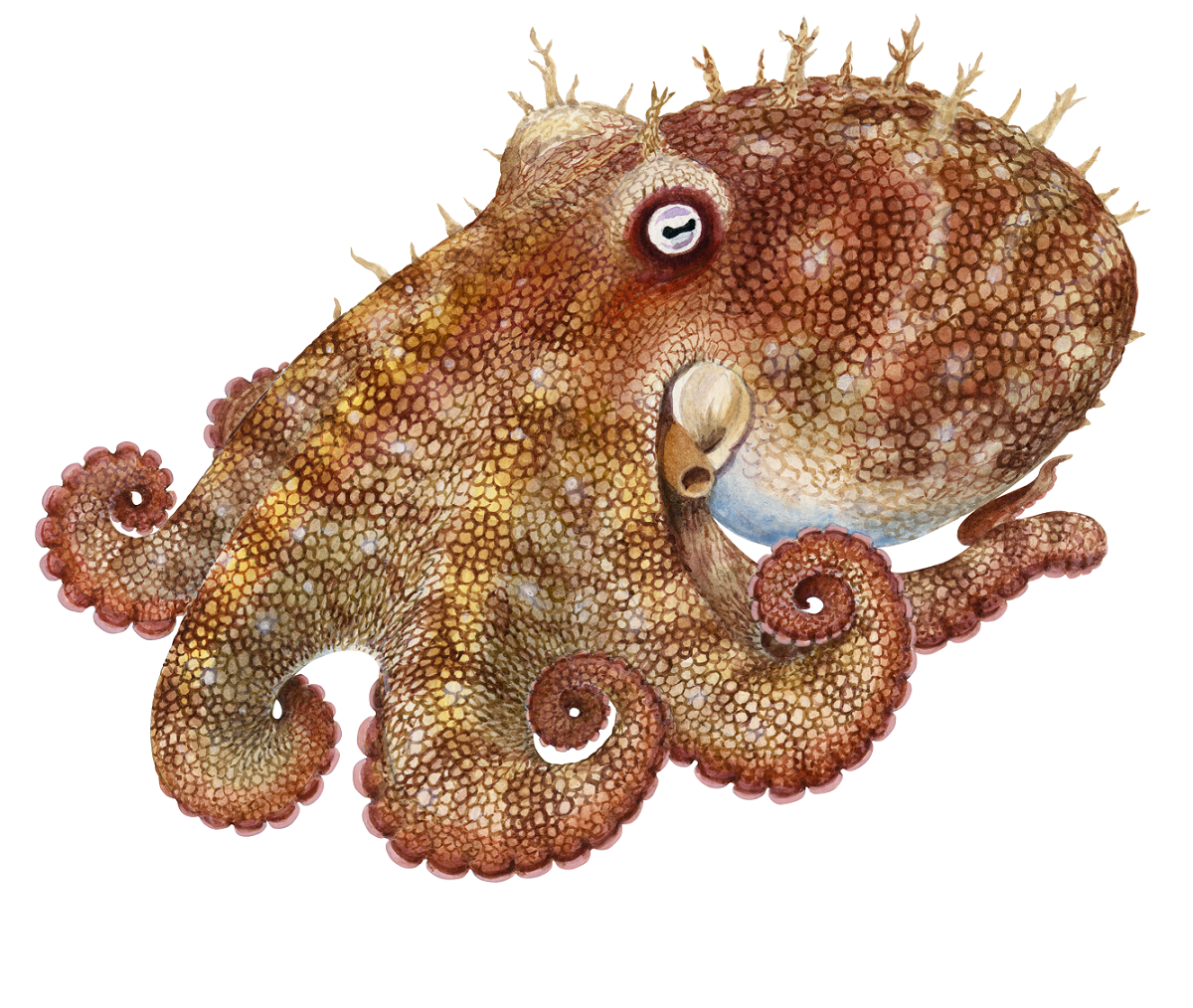Pale Octopus
Octopus pallidus (Pale Octopus)

2023/24 Pale Octopus Status (Main Fishery - Bass Strait Stock)
| Stock Status | Depleting |
| Summary | An increase of over 100, 000 pots in the water in the latest year, combined with only a minimal increase in catch, raises significant concerns over the stock status of this fishery. Regional analyses indicate a shift in effort and catch away from previously productive areas in the western Bass Strait towards the east, including areas offshore from Flinders Island. The ecology of Pale Octopus and the species’ interaction with shelter pot gear means that this is a high-risk fishery. Catches across the fishery have remained high for the past six seasons, with particularly high catches and effort concentrated in relatively small geographic areas. |
| Stock | Tasmanian Pale Octopus - Bass Strait |
| Indicator(s) | Catch, effort and CPUE trends; catch-only assessment; risk assessment of recruitment impairment |
2023/24 Pale Octopus Status (Tasmanian Shelf Stock)
| Stock Status | Sustainable |
| Summary | This stock has been minimally accessed by the commercial fishery. Developmental fishing permits have been issued since 2016/17 (excluding 2018/19) but no catch was recorded prior to 2019/20. Since then, both catch and effort have remained very low. By-catch and byproduct reports from the rock lobster and scalefish fisheries are also minimal. Given the low levels of exploitation, the Pale Octopus stock in east, west, and southern Tasmanian waters is classified as Sustainable. |
| Stock | Tasmanian Pale Octopus – state waters excluding Bass Strait |
| Indicator(s) | Catch and effort |
Background
Targeted fishing for Pale Octopus has occurred in Tasmanian waters since 1980 and operated under permit for many years. Since December 2009, a specific octopus licence (fishing licence (octopus)) has been required to participate in the Tasmanian Octopus Fishery (TOF), which operates within Bass Strait, including waters to the east of Flinders Island. Two licences are issued, both to the same operator. The fishery primarily targets Pale Octopus using unbaited moulded plastic pots (‘shelter pots’; volume 3,000 mL) with no doors, which are attached to a demersal longline that is 3–4 km long and set on the sea floor at variable depths of 15–85 m (Leporati et al. 2009). Currently, a maximum of 1,000 pots per line is allowed. Octopus are attracted to these pots as refuges; pots are generally hauled after 3–6 weeks soak time. An abundant food supply may support a large population of octopus. When combined with a shortage of suitable shelters, this results in high catch rates.
No further octopus licences can be issued for the Bass Strait area. Pale Octopus catch from the remainder of Tasmanian state waters is landed under developmental fishing permits, and the accessed stock is identified here as the Tasmanian Shelf stock. Specific areas of permitted use vary among permits, but generally encompass waters south of 41° South. Each fishing permit is subject to specific limitations on the number and type of gear allowed in designated state waters.
A pdf of the complete 2023-2024 Tasmanian Octopus Assessment is available here:
Learn more about what each stock status classification means on our Stock Status Classifications Information Page:




Social and Economic Indicators